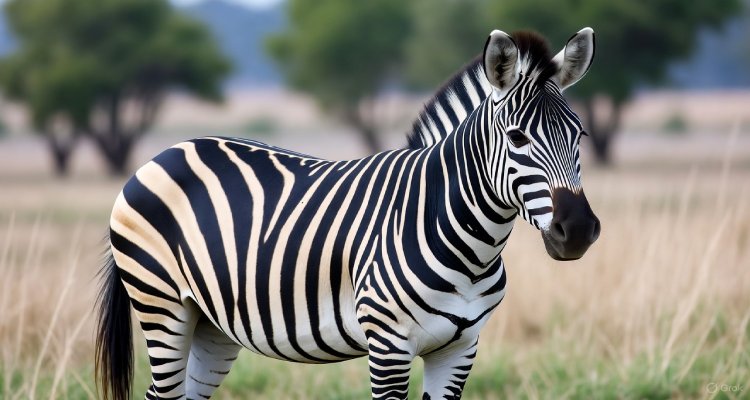Why Some Creatures Never Let Humans Domesticate Them
Despite centuries of human effort, some wild species—from zebras to wolves—have resisted domestication. Science reveals why nature drew the line.
The Untamed Truth
For thousands of years, humans have bent nature to their will—turning wolves into dogs, wild grasses into wheat, and wild horses into symbols of civilization. Yet, amid this mastery, a curious truth persists: not all creatures yield. Some, like zebras, antelope, and many big cats, have steadfastly resisted domestication despite generations of human attempts.
Why do some animals live comfortably in our homes and farms while others remain wild, unpredictable, and untamable? The answer lies deep in biology, evolution, and even psychology.
A Brief History of Domestication
Domestication is not simply about taming. A tamed animal is trained to tolerate humans; a domesticated one has evolved to depend on them. This process can take thousands of years and involves selective breeding for traits such as docility, adaptability, and social bonding.
Historians trace animal domestication back more than 10,000 years, when early humans in the Fertile Crescent began corralling wild goats and sheep. Over time, cattle, pigs, and chickens followed. These species shared common traits: they bred easily in captivity, lived in herds, and accepted hierarchical structures where humans could act as the “alpha.”
But for many species, that formula simply didn’t fit.
The Science of Resistance
Biologists have long asked why some species refuse to cross the line between wild and domesticated. In the 1950s, Russian geneticist Dmitry Belyaev ran a famous experiment with foxes. By selectively breeding the friendliest individuals, he produced a line of foxes that wagged their tails and sought human affection—within just 40 generations.
The key, scientists later realized, wasn’t intelligence or strength—it was temperament. Species capable of forming social bonds and managing stress in human-controlled environments were more likely to be domesticated.
Animals like zebras, however, are the opposite. Their fight-or-flight response is so strong that captivity induces extreme stress. Even after generations, their wild instincts remain intact, making them prone to panic and aggression. As evolutionary biologist Jared Diamond wrote in Guns, Germs, and Steel, “Zebras have never been domesticated because they’re just too mean.”
Case Studies: Nature’s Holdouts
1. Zebras – The Untamable Equine
Unlike horses, zebras have unpredictable temperaments and no stable herd hierarchy, making human dominance nearly impossible. They bite, kick, and resist training—traits that serve them well in Africa’s predator-rich savannas but poorly in captivity.
2. Deer and Antelope – Fragile and Flighty
Though graceful, deer and antelope are notoriously anxious. Their sensitivity to confinement and rapid startle reflex lead to high mortality in captivity. Unlike cows or goats, they lack the herd cohesion necessary for controlled breeding.
3. Wolves – The Split Path of Evolution
While ancient wolves evolved into today’s domestic dogs, modern wolves remain aloof and territorial. Only a narrow genetic window allowed some wolf populations to form mutualistic relationships with humans—a phenomenon that no longer exists in the same form.
4. Elephants – Intelligent but Independent
Although elephants can be tamed and trained, they’re not truly domesticated. Their long gestation period (22 months) and slow reproduction rate make selective breeding nearly impossible on a human timescale.
Expert Insights
According to Dr. Brian Hare, an evolutionary anthropologist at Duke University, “Domestication is less about human effort and more about the animal’s willingness to cooperate. Some species evolved to read social cues; others evolved to resist control.”
Ethologist Dr. Temple Grandin adds that domestication fundamentally alters brain chemistry. “Domesticated animals show reduced fear responses and increased oxytocin release in human interactions. If a species can’t adapt its stress response, it can’t thrive alongside us.”
The Ecological Equation
Beyond behavior, ecology plays a defining role. Animals with specialized diets, migratory habits, or solitary lifestyles resist human control. For example, cheetahs require vast territories and have narrow genetic diversity, making breeding programs notoriously difficult.
In contrast, chickens and pigs, which eat almost anything and thrive in varied environments, adapted seamlessly to domestication. The rule seems simple: flexibility equals tameness.
What This Means for the Future
Today, with advances in genetics and behavioral science, humans can theoretically “edit” the domestication process. CRISPR-based gene editing could one day create tamer versions of previously wild species. But that prospect raises ethical questions—should we engineer wildness out of nature?
Moreover, many conservationists warn that domestication blurs the line between preservation and control. Wild species play vital roles in ecosystems that domestication could disrupt.
The Wild Within
Humans may have mastered much of the natural world, but some creatures remain beyond reach—not because they lack intelligence, but because they embody a kind of evolutionary freedom. Their resistance reminds us that not all relationships with nature must be defined by control.
In a world increasingly shaped by human hands, the truly wild remind us of something we’ve nearly forgotten: the power of independence.
Disclaimer:This article is for informational and educational purposes only. It is based on scientific research, expert opinions, and evolutionary theory.











